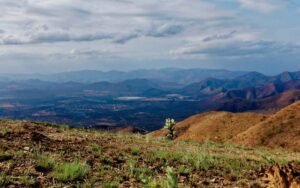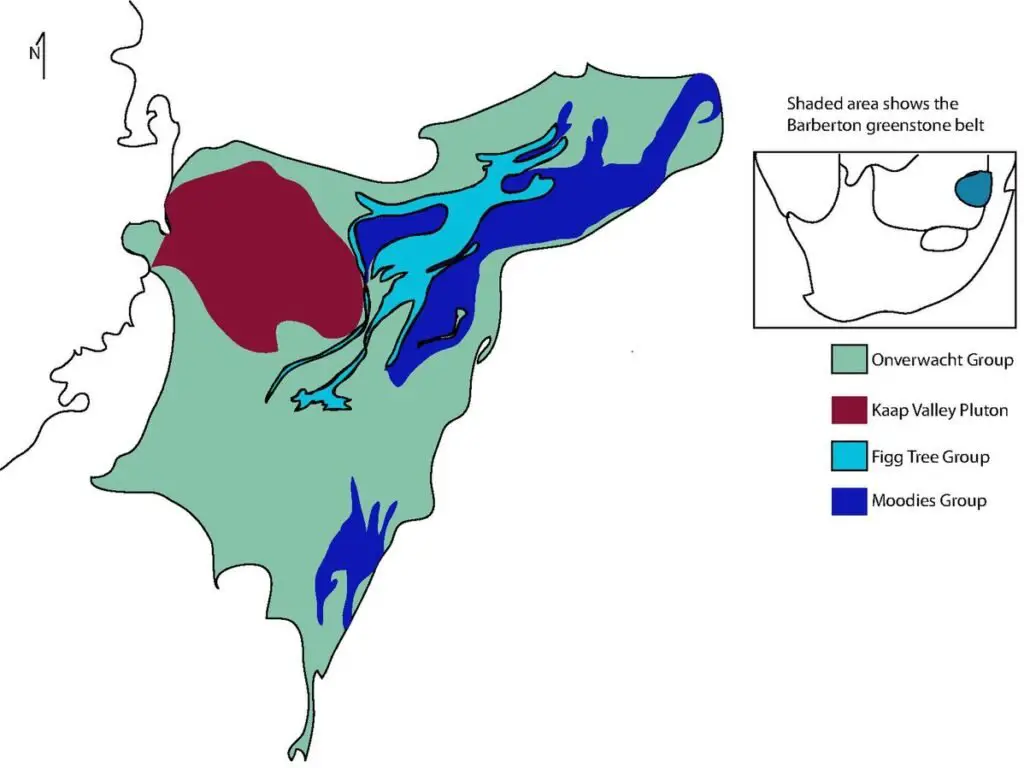
Why Barberton Greenstone Belt in news?

- Nestled on the eastern edge of the Kaapvaal Craton in South Africa lies a geological treasure trove known as the Barberton Greenstone Belt.
- This remarkable belt has recently captured the attention of scientists worldwide due to groundbreaking discoveries shedding light on our planet’s early history.
- In this comprehensive exploration, we embark on a journey to uncover the mysteries of the Barberton Greenstone Belt, from its rich mineral deposits to its pivotal role in understanding Earth’s ancient past.
Unveiling Earth’s Earliest Earthquakes
- Recent scientific findings have unveiled evidence of some of the earliest known earthquakes within the Barberton Greenstone Belt.
- These seismic traces offer a glimpse into the tumultuous geological activity that shaped our planet billions of years ago, providing invaluable insights into early Earth dynamics.
- The discovery of these ancient tremors opens a new chapter in our understanding of Earth’s geological evolution.
Gold Mineralization and Komatiites
- The Barberton Greenstone Belt is renowned for its gold mineralization, attracting prospectors and geologists alike. Additionally, it boasts a unique geological feature – komatiites, an unusual type of ultramafic volcanic rock.
- Named after the Komati River that flows through the belt, these komatiites offer clues to the volcanic processes that once dominated the region.
- The presence of gold deposits further adds to the allure of this geological wonder, highlighting its economic significance alongside its scientific importance.
Ancient Rocks, Ancient Life
- Among the oldest exposed rocks on Earth, with ages surpassing 3.6 billion years, the Barberton Greenstone Belt holds a significant place in geological history.
- These ancient rocks harbor traces of early life, ranking second only to the Isua Greenstone Belt of Western Greenland.
- Exploring these ancient formations unveils crucial clues about the emergence and evolution of life on our planet.
- The discovery of microbial fossils within these rocks offers tantalizing insights into the conditions that prevailed during Earth’s infancy, paving the way for further investigations into the origins of life.
Makhonjwa Mountains: Guardians of Geological History
- Comprising 40% of the Barberton Greenstone Belt, the Makhonjwa Mountains stand as silent witnesses to Earth’s tumultuous past.
- Their geological diversity and pristine preservation offer scientists a unique opportunity to unravel the mysteries of early Earth processes and environmental conditions.
- From towering peaks to serene valleys, the Makhonjwa Mountains encapsulate the geological heritage of the Barberton Greenstone Belt, preserving invaluable records of our planet’s ancient history.
Understanding Ultramafic Rocks:
- Delving deeper into the geological makeup of the Barberton area, we encounter ultramafic rocks – dark-colored igneous formations rich in magnesium and iron minerals.
- These rocks, resembling the composition of Earth’s mantle, provide crucial insights into the planet’s interior dynamics and volcanic activity during its formative years.
- By studying the chemical composition and mineralogy of ultramafic rocks, scientists gain valuable clues about Earth’s early geodynamic processes, shaping our understanding of planetary evolution.
Conclusion:
- The Barberton Greenstone Belt stands as a testament to Earth’s ancient history, offering a window into the primordial processes that shaped our planet.
- From its gold-rich mineralization to its enigmatic komatiites and ancient rocks harboring traces of early life, this geological marvel continues to captivate scientists and enthusiasts alike.
- As research progresses, the Barberton Greenstone Belt promises to unveil further secrets, enriching our understanding of Earth’s origins and evolution. Through continued exploration and discovery, we are poised to unravel the mysteries of our planet’s past, guided by the enduring legacy of the Barberton Greenstone Belt.
People also ask
Q1: What is the Greenstone Belt?
Ans: The Greenstone Belt is a geological formation located on the eastern edge of the Kaapvaal Craton in South Africa. It is renowned for its ancient rocks, gold mineralization, and unique geological features.
Q2: How old are the rocks in the Greenstone Belt?
Ans: Some of the rocks in this geological formation are more than 3.6 billion years old, making them among the oldest exposed rocks on Earth.
Q3: What is komatiite, and why is it significant?
Ans: Komatiite is an unusual type of ultramafic volcanic rock found in the Greenstone Belt. It is named after the Komati River that flows through the belt. Komatiites are significant because they provide insights into the volcanic processes of the early Earth.
Q4: What role does the Greenstone Belt play in understanding early Earth history?
Ans: The Greenstone Belt preserves a record of early Earth processes, including volcanic activity, tectonic movements, and the emergence of life. Scientists study this geological formation to understand the conditions that existed on Earth billions of years ago.
Your point of view caught my eye and was very interesting. Thanks. I have a question for you.
Can you be more specific about the content of your article? After reading it, I still have some doubts. Hope you can help me.